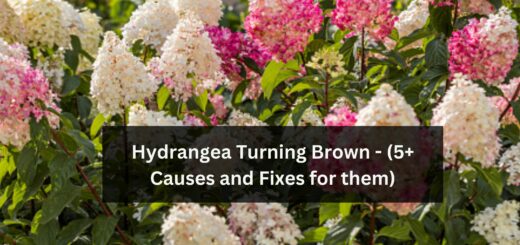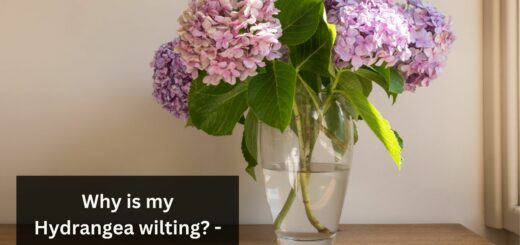8 Causes of Hydrangea Leaves Turning Yellow (And How to Fix It)
Have you ever seen a hydrangea bush and admired its large, beautiful blooms? They’re one of the most popular flowers and for good reason! Hydrangeas are relatively easy to take care of… as long as you don’t have yellow leaves. Yes, it is true. It is important to maintain the growth of Hydrangeas as it will keep growing without any issues. But once I faced some of the yellow-colored leaves in my plant. Are you worried about the Hydrangea Leaves Turning Yellow? If yes, then stay connected with the guide.
Key takeaways:
- Hydrangea Leaves Turning Yellow worries the farmers which put them in trouble as they don’t know what to do with the plant.
- First, it is essential to know about the causes behind this issue so that you find ways to correct them.
- Some of the causes of Hydrangea Leaves Turning Yellow can be caused by the fungus, nutrient deficiency, nitrogen deficiency, too much sunlight, and many more that force the plant to turn these leaves yellow.
- They can be treated as well. While there are a few reasons your hydrangea leaves might turn yellow, don’t worry; there are also solutions to help bring your plant back to health.
In this blog post, we will explore 8 causes of hydrangea leaves turning yellow and how you can fix it. Let’s get started.
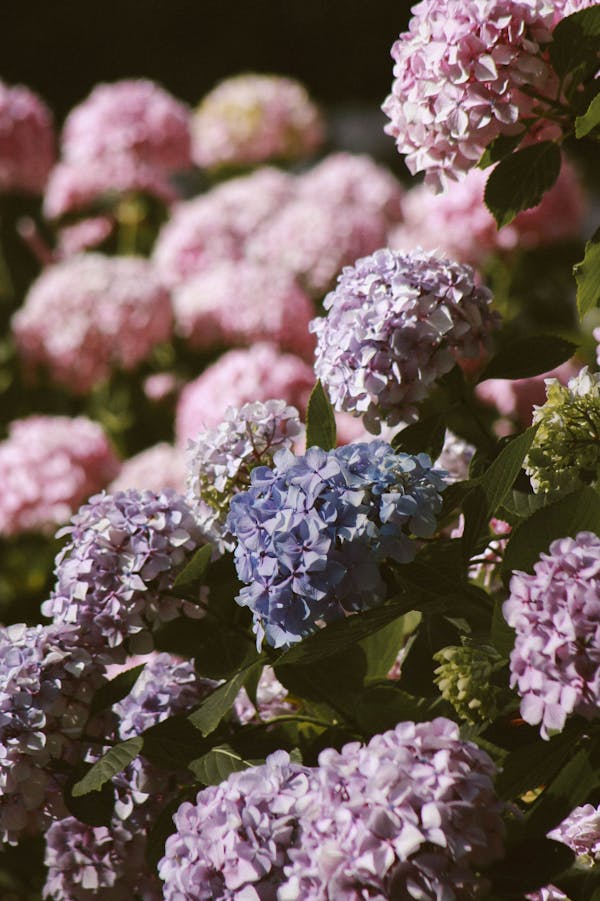
8 Causes of Hydrangea Leaves Turning Yellow (And How to Fix It)
Hydrangeas are a beautiful addition to any garden, but they can be finicky plants. One common problem is hydrangea leaves turning yellow. There are a few possible causes of this, and luckily, there are also a few solutions.
If your hydrangea leaves are turning yellow, it could be due to a number of reasons. It could be a sign of too much sun exposure, not enough water, or nutrient deficiency.
If your plant is getting too much sun, the leaves will start to turn yellow. Move it to a shadier spot and see if that helps.
Not enough water can also cause the leaves to turn yellow. Make sure you’re watering regularly and deeply, so the roots can get the moisture they need.
Finally, a nutrient deficiency can also cause the leaves to turn yellow. Check the soil to see if it needs more fertilizer and amend accordingly.
Hydrangea leaves can turn yellow for a variety of reasons, ranging from environmental stressors to nutrient deficiencies. Let’s take a closer look at some of the most common causes of Hydrangea Leaves Turning Yellow:
1. Leaf scorch from too much light
If your hydrangea leaves are turning yellow, it could be due to leaf scorch from too much light. One of the Causes of Hydrangea Leaves Turning Yellow.
Leaf scorch is a condition caused by the leaves being exposed to too much sunlight, which can cause the leaves to turn yellow or brown and eventually die.
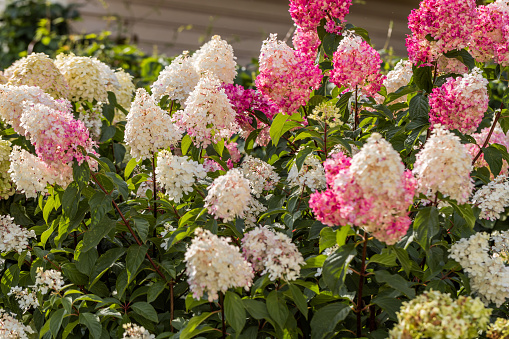
To prevent leaf scorch, make sure to plant your hydrangea in an area that receives partial sun or filtered light. You can also try placing a sheer curtain over the window to help filter the light. It will fix the issue of Hydrangea Leaves Turning Yellow.
2. Dry soil in the plant
Another cause behind the Hydrangea Leaves Turning Yellow is the soil dryness. You have to check if the soil is dry or not. When the soil of the plant remains dry for a long time, then it develops yellow-colored leaves in the plants which destroy the plant with time.
It is not a good sign so needs to treat at an earlier stage. But do you know what will you do to fix the Hydrangea Leaves Turning Yellow? You can water the plant on time when the soil becomes dry so that it does not remain dry for a long time. It will fix the Hydrangea Leaves Turning Yellow.
3. Iron deficiency
Iron deficiency is one of the most common reasons for hydrangea leaves turning yellow.
If your soil is lacking in iron, your plants will not be able to produce chlorophyll, which gives leaves their green color. Iron deficiency can be caused by several factors, including:
–Soil that is too alkaline
-Water that is high in limestone
-Competing plant roots
To fix an iron deficiency, you will need to lower the pH of your soil. This can be done by adding sulfur or aluminum sulfate to your soil. You may also need to water your plants with an iron chelate solution. It will fix the issue of Hydrangea Leaves Turning Yellow.

4. Lack of water
If your hydrangea’s leaves are turning yellow completely and falling off, it is likely due to a lack of water. Hydrangeas are quite drought-tolerant, but they will not tolerate extended periods without water.
Make sure to keep the soil around your hydrangea moist (but not soggy) and provide additional water if there has been a period of extended dry weather.
If you believe your plant is getting enough water but the leaves are still yellowing and falling off, it could be a sign of disease or pests. Inspect the plant carefully for signs of insects or fungal growth and treat accordingly. It will fix the issue of Hydrangea Leaves Turning Yellow.
5. Nitrogen deficiency
Nitrogen deficiency is one of the most common causes of hydrangea leaves turning yellow. Nitrogen is an essential nutrient for plants, and it is responsible for many functions, including foliage growth and chlorophyll production. When nitrogen levels are low, plants will begin to exhibit symptoms such as yellowing leaves.
There are a few ways to correct a nitrogen deficiency. One is to fertilize with a nitrogen-rich fertilizer. Another is to add organic matter to the soil, such as compost or manure. You can also try using a slow-release nitrogen fertilizer, which will provide a steady supply of nitrogen over time.
If you suspect that your plant is suffering from a nitrogen deficiency, be sure to test the soil before taking any corrective action. It will fix the issue of Hydrangea Leaves Turning Yellow.
6. Environmental stressors
Are you sure if your plant is going healthy? if not, then have a look if the plant is having any kind of environmental stress. It is also one of the Causes of Hydrangea Leaves Turning Yellow. Too much sun or heat can cause hydrangea leaves to turn yellow.
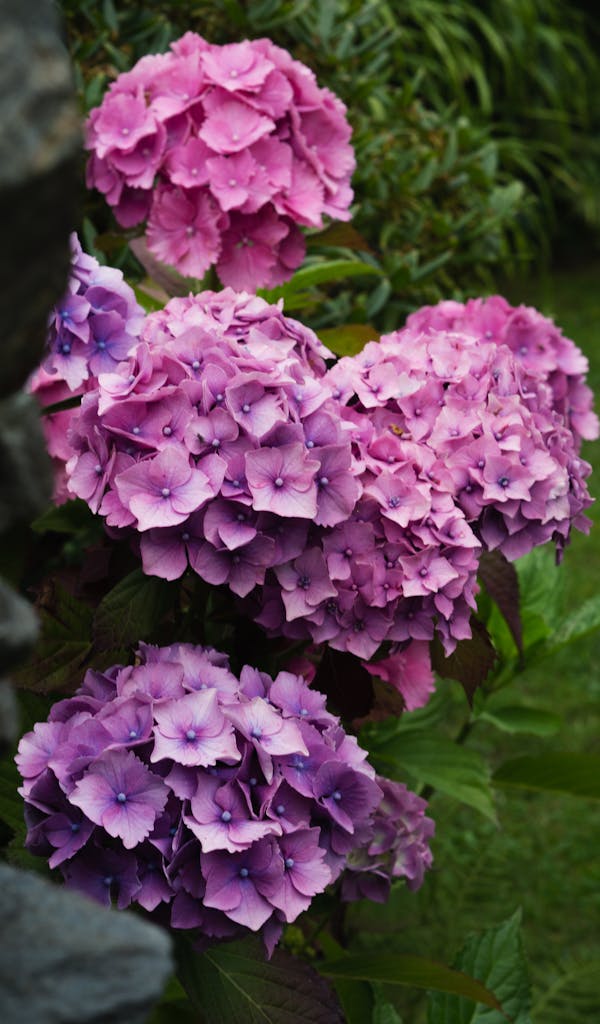
If your plant is getting too much direct sunlight, try moving it to a shadier spot. If the weather is particularly hot, you may need to provide extra water to prevent your plant from wilting. It will fix the issue of Hydrangea Leaves Turning Yellow.
7. Lack of sunlight
Another cause of the Hydrangea Leaves Turning Yellow is the lack of sunlight provided to the pants. Hydrangeas prefer partial shade and will scorch in less sunlight or no shade.
If you notice the leaves on your plant turning yellow, move them to a shadier spot. So, make sure you are fulfilling the needs of the hydrangea so that the plant grows healthily. It will fix the issue of Hydrangea Leaves Turning Yellow.
8. Diseases
Last but not least, another cause of Hydrangea Leaves Turning Yellow is the disease spread by outside factors. Sometimes, yellowing leaves are caused by diseases, such as fungal infections or leaf spot diseases.
These problems can usually be treated with pesticides or fungicides, but it’s always best to consult with a professional before using any chemicals on your plants. It will fix the issue of Hydrangea Leaves Turning Yellow.
Concluding lines
In this guide, you come to know that Hydrangea Leaves Turning Yellow worries the farmers which put them in trouble as they don’t know what to do with the plant. First, it is essential to know about the causes behind this issue so that you find ways to correct them. Some of the causes of Hydrangea Leaves Turning Yellow can be caused by a fungus, nutrient deficiency, nitrogen deficiency, too much sunlight, and many more that force the plant to turn these leaves yellow. They can be treated as well. Read the guide properly so that you understand it properly.
Thanks for reading! Happy gardening!
FAQs
1. What to feed hydrangeas with yellow leaves?
If you have a hydrangea with yellow leaves, there are a few things you can do to help it. First, check the soil to see if it is too alkaline or too acidic. If it is, you can adjust the pH by adding sulfur or lime to the soil. You should also make sure that the plant is getting enough water.
Hydrangeas need about 1 inch of water per week. If the soil is dry, water the plant deeply. You can also add a layer of mulch around the base of the plant to help retain moisture. Finally, make sure that the plant is getting enough sunlight. Hydrangeas need at least 6 hours of sunlight per day. It will fix the issue of Hydrangea Leaves Turning Yellow.
2. Why are my hydrangea flowers turning yellow?
There are a number of reasons why your hydrangea flowers may be turning yellow. It could be due to a lack of nutrients in the soil, or it could be because of too much sun or water.
If you think that your plant is not getting enough nutrients, you can try fertilizing it with an all-purpose fertilizer.
3. How do you treat yellow leaves on hydrangeas?
One of the most common reasons for hydrangea leaves turning yellow is the lack of water. Hydrangeas are thirsty plants and require regular watering, especially during hot weather. If the soil around your plant is dry, give it a good soaking. If you see yellow leaves on your plant, check the soil moisture level and water accordingly.
Another common reason for yellowing leaves is too much sun. Hydrangeas prefer partial shade and will scorch in full sun. If you notice the leaves on your plant turning yellow, move them to a shadier spot.
